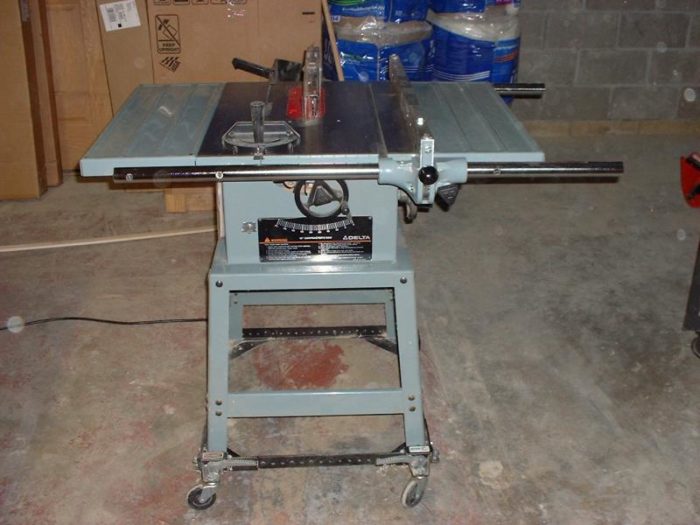


#Delta rockwell table saw cast iron wings series
It came off of a 113.298xxx series Craftsman table saw.

This is a Craftsman cast iron table saw extension wing measuring 12" wide by 27 " deep (the same depth as most Craftsman Table Saw tops) by 1 1/2" thick. Vintage Craftsman 10" Table Saw Cast Iron Extension Wing These fit the Craftsman table saws in the 113.298xxx and 113.299xxx model series. The better quality Craftsman table saws used to came with webbed cast iron extension wings as pictured below. Some were sheet metal while others were made of cast iron. More than likely you will void any warranty by doing un authorized modifications.There were several types of Craftsman Table Saw Extension Wings used on their saws.

Please do not file, sand or otherwise modify the cast iron wings before you contact SawStop. My father ran his hand through his table saw more than once and I have sever al friends missing fingers. This is a small price to pay for the added safety and more thought out features that the saw has. If the bolts are too tight during the alignment process, the top will twist when you are tapping it into proper position. Take the time to carefully align everything and not torque up the attachment bolts until everything is aligned. Locator pins would have been an improvement along with a more rigid casting. It took considerable time to set them flush and level and their flatness is dependent on everything being perfectly aligned and legs adjusted perfectly, a tedious process. While overall the saw is heavy and well built, much better than convention models of the past, the cast iron wigs are lighter and more flexible that my previous conventional Delta Unisaw and others such as Powermatic etc. I have the Sawstop Industrial and have only one issue with the saw. The point of all of this is that these wings CAN and DO flex and this is just part of the joy of assembling a table saw :) Wooden blocks may help here.).ĭo the same on the back and I would be willing to bet that you problem will go away. I use my C-clamp vertically (screw is vertical) and use it to help flex the wing and table together (the screw pad spans both the table surface and the wing surface and the "C" contacts the cast webbing underneath. If you can hold it by hand and tighten the front bolt that's great, but most likely you will need to use a clamp to help hold the two surfaces in place while you are tightening the front bolt. Use the straight edge again to align the surfaces at the front. If the wing wants to pivot on the center bolt, temporarily snug up the rear bolt. Starting at the front Flex the wing (up or down). I usually use two big-ass C-clamps, but any good clap that can apply ample force without slipping will do. In this next step you may need mechanical leverage but muscle may work. Tighten the bolt in the center - leave the front and rear bolts alone. (Drop the blade, remove the throat plate, guard and fence)Ĭarefully raise the wing so that it contacts the straight edge IN THE CENTER ONLY. Get a good straight edge and place it in the center of the table (under the center bolt), on edge, perpendicular to the blade, spanning between the table and wing. Push the wing down bellow the table surface. Leave it bolted to the table tight enough so that there is enough friction that as you move it, it wants to say in place (not flopping around). If the bump can be felt at the seam where the wing meets the table, loosen all three bolts so that the wing can slide up and down.


 0 kommentar(er)
0 kommentar(er)
